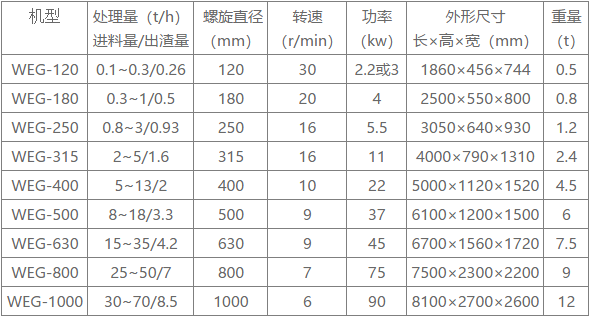Location:Home > Products > Dosing Related

Scan your phone once
The stacked screw sludge dewatering machine follows the principles of force water co direction, thin-layer dewatering, appropriate pressure, and extended dewatering path, solving the technical problems of previous generations of sludge dewatering equipment such as easy blockage, inability to treat low concentration sludge and oily sludge, high energy consumption, and complex operation, and achieving the goal of efficient and energy-saving dewatering. The dewatering machine can achieve efficient flocculation under fully automatic operation conditions, and continuously complete sludge concentration and press dewatering work, ultimately returning or discharging the collected filtrate. Widely used in municipal sewage treatment projects and water treatment systems in industries such as food, starch, oil, pharmaceuticals, chemicals, papermaking, leather, etc.
The stacked screw sludge dewatering machine integrates a fully automatic control cabinet, flocculation conditioning tank, sludge concentration dewatering body, and collection tank. The main body is a filtering device formed by stacking a fixed ring and a moving ring, with a spiral shaft passing through it. The front section is the concentration section, and the rear section is the dehydration section. The filter gap formed between the fixed ring and the moving ring, as well as the pitch of the spiral shaft, gradually decreases from the concentration section to the dehydration section. The spiral shaft continuously drives the ring to clean the filter gap and prevent blockage. The rotation of the spiral shaft not only drives the sludge to be transported from the concentration section to the dewatering section, but also generates a great internal pressure under the blocking effect of the back pressure plate, continuously reducing the volume and achieving the goal of full dewatering.

1. Juice extraction of fruits, vegetables, roots, stems, leaves, flowers, fruits, and other materials. Such as apples, pears, ginger, grapes, alfalfa, pineapples, kiwis, mulberries, blueberries, pure seabuckthorn fruits, oranges, goji berries, etc; Chrysanthemums, peonies, roses and other fresh flowers; Beet, red fruit, taro, aloe vera, palm, olive, pomegranate, etc;
2. Solid liquid separation of solid or liquid materials in various industries, as well as pressing and dewatering of waste residue.
Food processing: Carrots, coconut paste, mushrooms, glutinous rice wine lees, seafood waste, onion residue, winter melon residue, bean sprout residue, citrus comprehensive utilization, tobacco, sugar beet residue, chrysanthemum, oil residue, coconut coir, various traditional Chinese medicine residues, various tea residues, vinegar residue, beer residue, coffee residue, corn husk, furfural residue, fish paste, shrimp residue, chicken hair and chicken residue, etc; Soy protein, pectin, xanthan gum, etc;
Energy: biogas residue, sweet sorghum, water hyacinth, cassava residue, sweet potato residue, potato residue, sugarcane bagasse, seaweed, various oil residues, etc;
Other: filter residue, diaper waste, cellulose, medical waste, rubber waste;
3. Extraction and dehydration of fruit and vegetable waste, kitchen waste, and household waste; Separation of food waste, organic matter, and inorganic matter;
4. Dehydration of various types of feces, such as pig manure, cow manure, duck manure, and the pressing and separation of slaughterhouse wastewater;
5. Dehydration of sludge and pulp, recycling of plastics
Copyright © 2025 SANSHINE Environmental Protection all rights reserved.